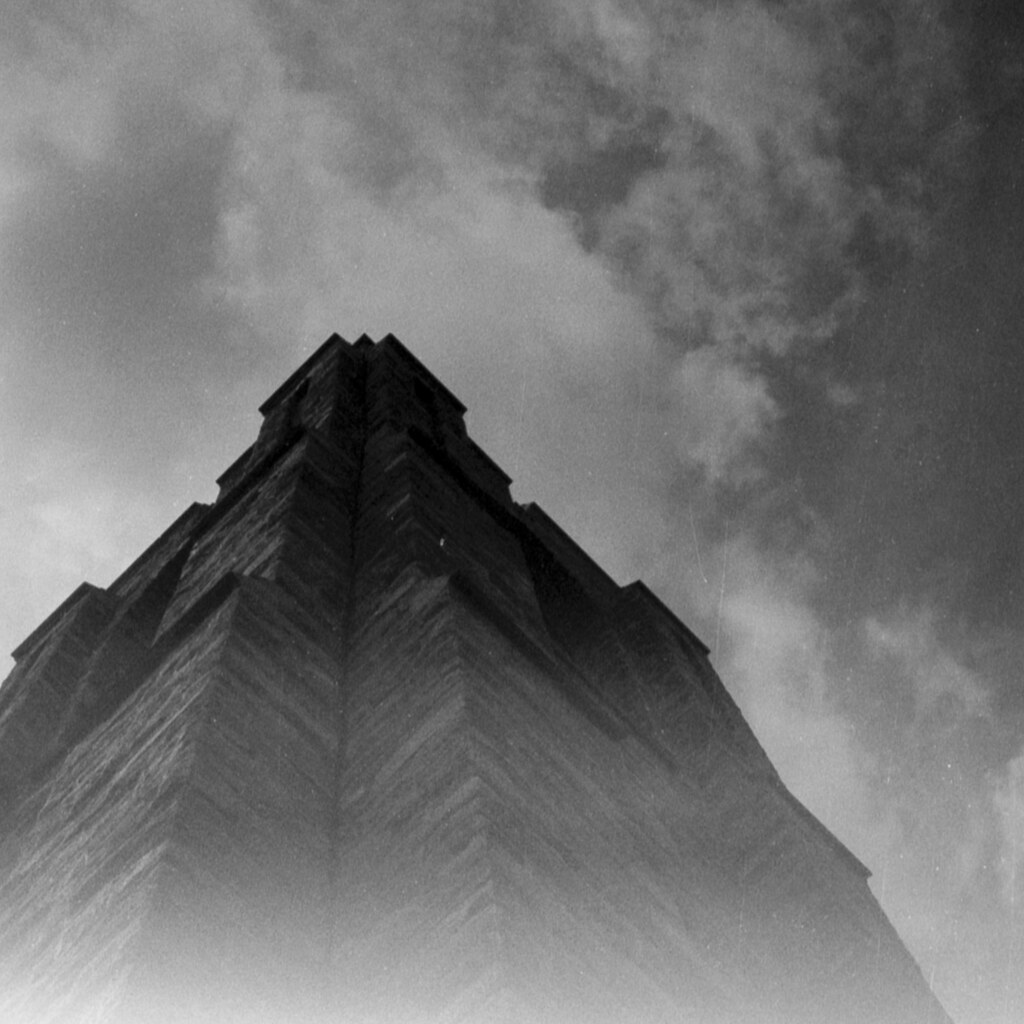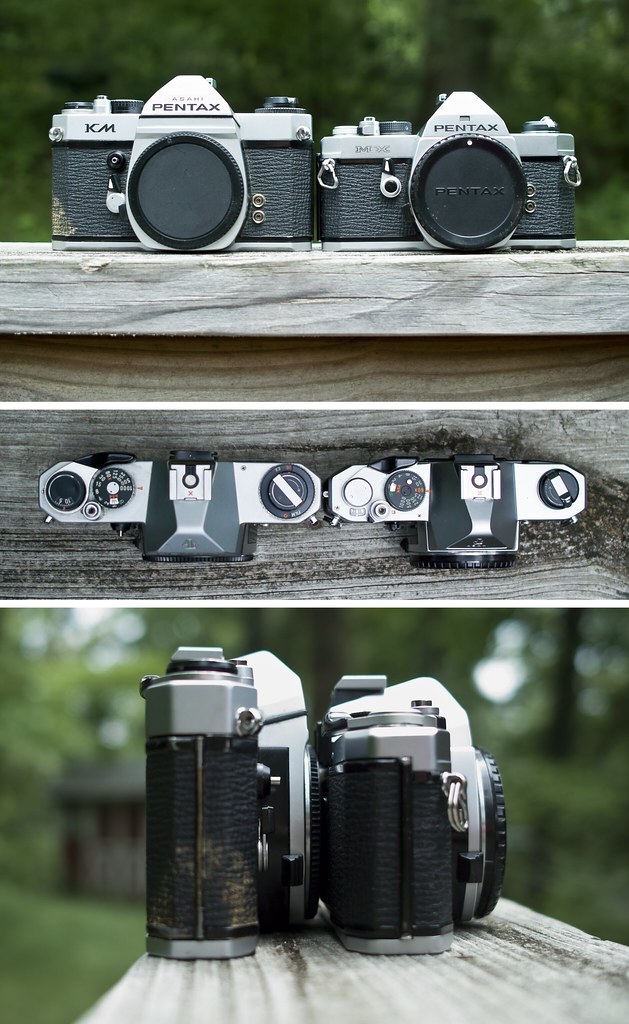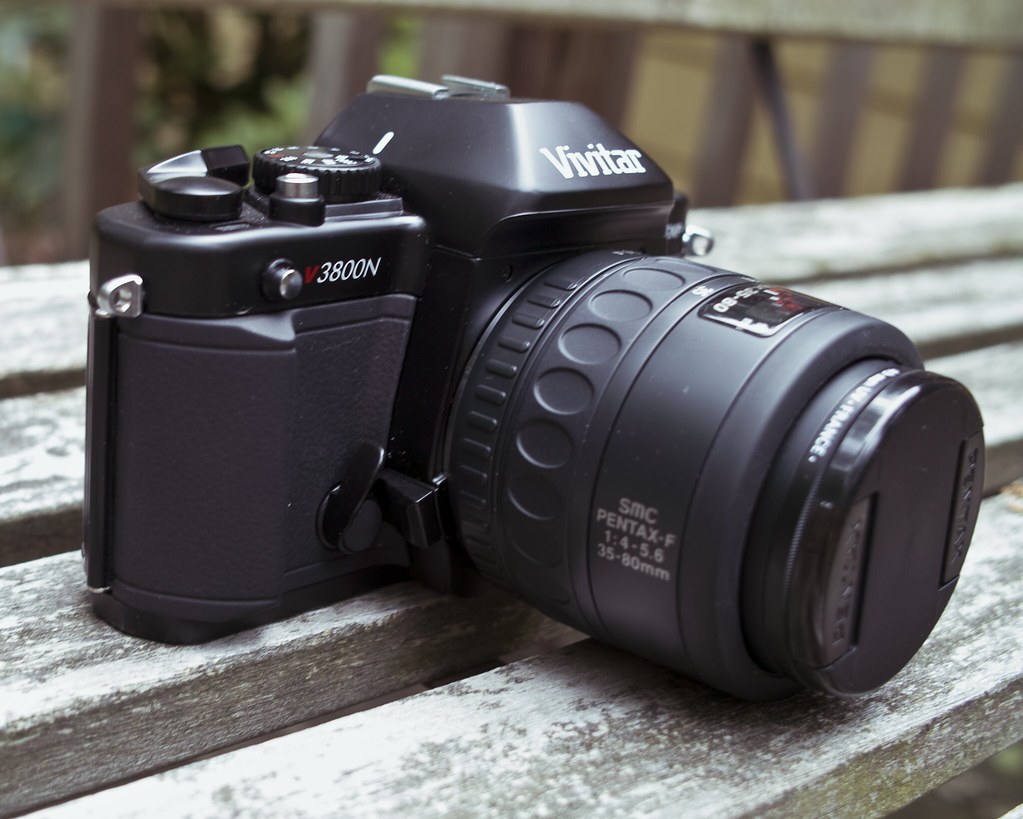Canon Dial 35 2

This review is part of my photo reference set on Flickr. Clicking the photo above will take you to the photo page on Flickr, with pretty much the same review, but very detailed notes about the camera on the photo itself.
This here is a Canon Dial 35 2. Mine was distributed by Bell & Howell, and is branded as a Bell & Howell Dial 35. Before the Dial 35 2, Canon released the Dial 35, which Bell & Howell branded as the Bell & Howell / Canon Dial 35. So that’s what they’re called, but what are they?
Well, they’re half-frame 135 cameras with shutter priority or metered manual operation. They have wind-up clockwork motors for film advance and rewind. Plenty of other half-frame cameras exist, but most stick to the traditional camera layout that everyone is used to. Depending on how you shoot, this is a good or a bad thing — because it means that your standard orientation is going to be portrait. The Dial 35, with its odd layout shoots landscape when oriented ‘normally,’ which is my main draw to the camera.

canon dial 35 2, ilford panf+, hc-110
The camera has decent ergonomics. Zone-focusing is achieved with a lever running along the top of the lens. Surrounding the lens is the shutter speed adjustment, with speeds from 1/30-1/250. Shutter release is on the lower right (from the user’s perspective) of the lens. Above the release is a small knob for aperture setting. Push the knob into the body, and the camera operates in Tv automatic mode. Pull it out, and turn it to adjust the aperture (f/2.8-22), metering inside the finder. Oddly, the shutter speeds are visible only outside the finder on the shutter speed dial, and aperture numbers are visible only inside the finder, with no representation on the knob itself.

canon dial 35 2, ilford panf+, hc-110
While the camera feels really solid and has decent optics, it also has one fatal flaw: the clockwork advance mechanism. I ran one roll of film through mine, and it started acting very sticky when I went to rewind it. I thought it was done, but opened the back prematurely and fogged the roll. And then, after that, the mechanism stopped working altogether. This is a common issue, and the mechanism is not simple to get to, and less simple to repair. Some people have reported success merely by slipping penetrating lubricants inside — I plan to try this, but it’s low priority. For now, I have a neat, useless camera which I at least got to shoot one roll of film through.
Size comparison: Pentax K vs Pentax M bodies

This little article is part of my photo reference set on Flickr. Clicking the photo above will take you to the photo page on Flickr, with quite a few notes about the cameras on the photo itself.
When I was looking to move from a Pentax KM to a Pentax MX, I was unable to find any good photos comparing the sizes of the two series of bodies. So, after I received my MX and before I gave my KM to a friend, I shot them side-by-side at some straightforward angles in case this information is ever valuable to anybody else.
As far as other layout differences between the K-series and the MX (other M-series have even different layouts, being Av bodies), few are notable. K-series bodies either have no indicator (K1000), or a spin wheel to describe what sort of film is in the body. I prefer either of these to the memo holder of the MX, wherein one slides part of the box the film came in. I’ve never used these memo holders, I think they’re ugly and I think they’re awkward. Depth of field preview has been merged into the self-timer lever on the MX, which is a nice UI simplification. The ISO adjustment wheel (outer ring of shutter speed dial) on K-series bodies is of the sort that one lifts and rotates to adjust. On the MX, a tiny button on the shutter speed dial must be depressed, and then the outer ring turned to adjust the ISO. Which, unfortunately, only goes to 1600. Setting it is a real pain, though, compared to the old method… and I have tiny fingers! Finally, one of the biggest differences is match diode in the MX vs. match needle in the K-series. Personally, I choose diodes… Less precise, but also less fragile. Love the finder on that camera, and the LEDs are the icing on the cake.
Check out the Pentax MX group on Flickr.
Vivitar V3800N
Generally speaking, there are a few things I really look for in an SLR. Small size and light weight are very high priorities, as is fully manual operation via a mechanical shutter. At some point in my quest for a camera meeting these requirements, I ended up with a (Cosina-made) Vivitar V3800N, a plasticky, fully mechanical/manual K-mount camera with one interesting trick up its sleeve — it’s still being made and sold. It comes in two kits, either a zoom of some sort that didn’t interest me, or a 50/1.7 prime. I opted for the 50mm, and use it as a rainy-day, don’t-care-if-it-gets-wet-lens. I keep a nasty feeling (but incredibly light) Pentax 35-80 zoom on the V3800N. The camera now lives in the trunk of my car as a camera to lend to friends on impromptu photo-walks and for times when I would otherwise miss a shot for not having grabbed a camera when I left the house.

vivitar v3800n, pentax smc-f 35-80/4-5.6, kodak tri-x
i don’t ordinarily bring my good cameras poolside…
I can’t guarantee that the Vivitar will remain my ‘trunk camera’ forever. If I collect enough Pentax MXes, one of those could easily fill the position. If I overcome my fear of electronic shutters, a Super Program or P30t would also suffice. But for now, it’s the V3800N, for all its qualities and flaws. Starting out with the good — this camera is really light. This, of course, comes at the expense of being largely constructed of plastic, and likely not up to the torture tolerance of a K1000. As far as functionality, the camera scores pretty high. It gets points for its diagonal split rangefinder spot, coarse microprism collar, depth of field preview, and mirror lock-up on self timer. It has a multiple exposure feature, which it prominently advertises on the front of itself — something I have yet to use. Shutter is a vertical-travel Copal Square ranging from 1-1/2000, with flash sync at 1/125.

vivitar v3800n, 50/1.7 through extension, kodak tri-x 400
the kit lens is nothing special, but still a decent performer
The V3800N has a lot of nice features, but it’s still not a camera I would be quick to recommend. The plasticky feel is a bit hard to get over — I wouldn’t even begin to describe the camera as ‘solid.’ The match diode metering is nice (my preference over match needle), but only reads in three segments versus, say, the five LEDs in a Pentax MX. The film advance doesn’t feel too pleasant, and it doesn’t ratchet, which feels like a weird omission. The tripod thread is plastic, which I really don’t feel good about. Plastic threads repeatedly mating with metal threads is not a situation which inspires confidence in me. Finally, I had the meter straight-up fail during one of the few actual dedicated shoots I went on with the camera. The meter turned on, and responded to light, but was not linking with the lens or something. Fidgeting with the ISO setting eventually cleared it up, but this was not a great feeling from a brand new camera.
The Vivitar V3800N is not a horrible camera, and it is nice to see a fully manual, mechanical film SLR still being produced. At the price I imagine used ones go for, it would be a no-brainer backup camera that one would not mind if it got smashed to pieces. Rather than buying new, however, one would be better off finding a used classic K- or M- series Pentax which would almost certainly run more reliably for less money.
Check out the Vivitar V3800N group on Flickr. There’s also a general K-mount users group worth checking out. Finally, in reference to the Pentax ZX-M/MZ-M, Lewis Collard sings the praises of light, plasticky cameras.
